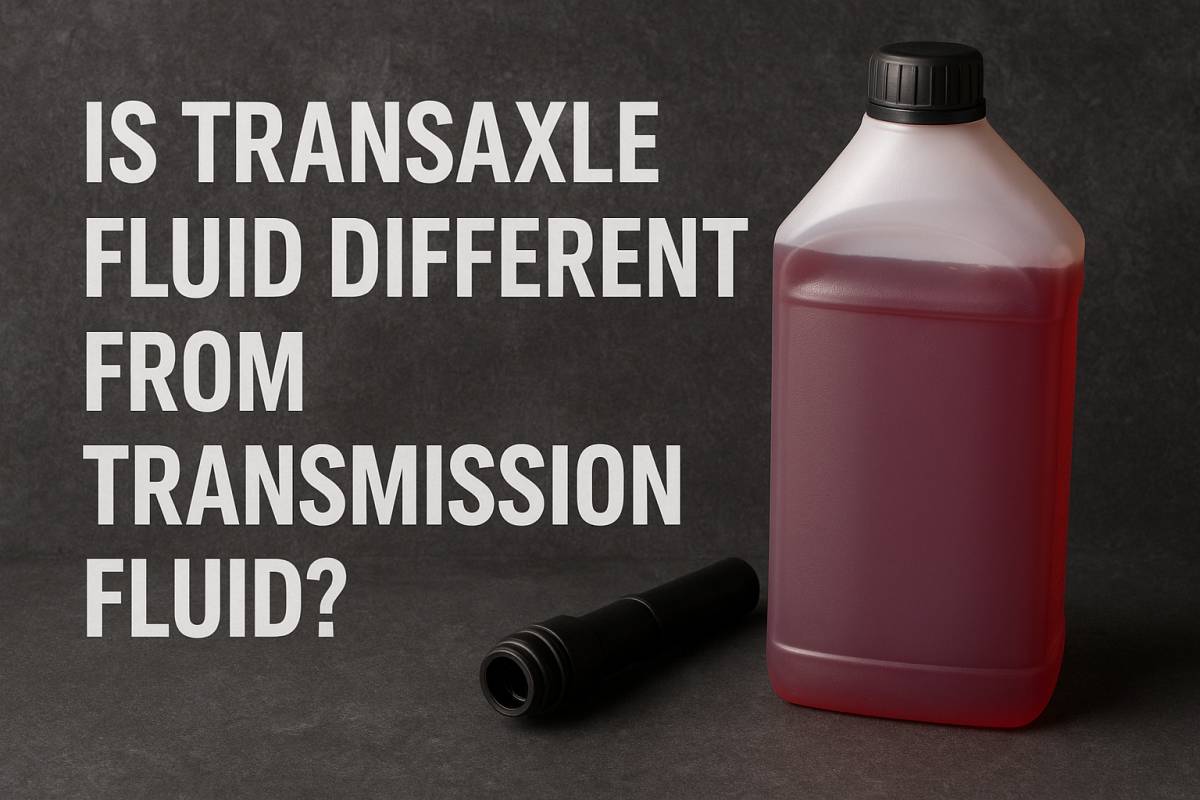Is transaxle fluid different from transmission fluid?

Yes – transaxle fluid is different from transmission fluid, though the two are closely related. Transmission fluid is used in vehicles with a separate transmission system, while transaxle fluid is designed for vehicles where the transmission and differential are combined into a single unit, called a transaxle. Both serve the same purpose – lubrication, cooling, and smooth gear shifting – but their application depends on the type of drivetrain and vehicle design.
Let’s dive deeper into what makes them different, why it matters, and how you can take care of your vehicle by understanding the right fluid to use.
What Is Transmission Fluid?
Transmission fluid is a specially formulated lubricant designed for the gearbox in automatic and manual transmissions (in some cases). Its key functions include:
- Lubrication: Reduces friction between gears, clutches, and moving parts.
- Cooling: Helps manage the heat generated by constant friction and movement.
- Hydraulic Function: In automatic transmissions, fluid acts as a hydraulic medium to help engage clutches and bands.
- Cleaning: Prevents buildup of sludge, varnish, and debris.
There are two main types of transmission fluid:
- Automatic Transmission Fluid (ATF): Thin, often red-colored, designed for smooth shifting and hydraulic functions.
- Manual Transmission Fluid (MTF): Thicker and gear-oil-like, focused more on lubrication.
What Is Transaxle Fluid?
A transaxle combines the transmission and differential into one unit. This design is most common in front-wheel-drive (FWD) and all-wheel-drive (AWD) vehicles. Because the transaxle handles both gear shifting and power delivery to the wheels, it requires a fluid that can handle multiple roles simultaneously.
Functions of Transaxle Fluid:
- Lubricates both gears and the differential.
- Helps with hydraulic functions in automatic transaxles.
- Ensures smooth gear engagement.
- Protects against wear and overheating.
In many cases, transaxle fluid is the same as ATF, but always check the manufacturer’s recommendation. Some vehicles require specialized formulas labeled specifically as “transaxle fluid.”
Key Differences Between Transmission Fluid and Transaxle Fluid
Here’s a clear comparison to understand the distinction:
| Feature | Transmission Fluid | Transaxle Fluid |
|---|---|---|
| System Used | Standalone transmission (RWD, some AWD, some FWD) | Combined transmission + differential (mostly FWD, AWD) |
| Main Purpose | Lubricates and enables gear shifting | Lubricates gears, differential, and enables gear shifting |
| Common in | Rear-wheel-drive (RWD) vehicles | Front-wheel-drive (FWD) and some AWD vehicles |
| Type of Fluid | ATF (automatic) or MTF (manual) | Often ATF, but may be specialized |
| Maintenance | Depends on transmission type | Depends on vehicle’s drivetrain system |
Why the Distinction Matters
- Vehicle Performance: Using the wrong fluid can lead to poor gear shifting, overheating, and potential long-term damage.
- Wear and Tear: Transaxles handle more tasks than transmissions alone, so they need fluid that can withstand higher demands.
- Manufacturer-Specific Needs: Some carmakers specify fluids designed uniquely for their transaxles.
If you confuse the two and use the wrong fluid, you risk shortening the life of your transmission or transaxle and facing costly repairs.
How to Know Which Fluid Your Vehicle Needs
1. Check the Owner’s Manual
This is the most reliable source of information. It will clearly state whether your vehicle requires ATF, MTF, or transaxle-specific fluid.
2. Look at the Vehicle Design
- Front-wheel-drive (FWD): Usually has a transaxle.
- Rear-wheel-drive (RWD): Typically uses a separate transmission and differential, so standard transmission fluid is used.
3. Consult a Mechanic
If you’re unsure, ask a professional. Using the wrong fluid can void warranties and damage your car.
Common Myths About Transmission and Transaxle Fluids
Myth 1: They’re Always the Same.
Not true. While transaxle fluid often is a type of ATF, certain vehicles require special formulations.
Myth 2: Fluid Never Needs Changing.
Fluids break down over time due to heat and friction. Ignoring fluid changes can cause sluggish shifting and eventual failure.
Myth 3: All ATF Brands Are Interchangeable.
Different vehicles may require specific additives. Always match the fluid to your carmaker’s recommendation.
Signs Your Transmission or Transaxle Fluid Needs Attention
- Delayed or rough gear shifting
- Slipping gears
- Grinding noises
- Leaking fluid (often red or brown in color)
- Burning smell
These symptoms suggest it’s time to check or replace your fluid before more serious damage occurs.
Maintenance Tips for Transmission and Transaxle Fluids
- Regular Checks: Inspect fluid level and color every few months.
- Scheduled Replacements: Replace fluid every 30,000–60,000 miles, depending on vehicle.
- Use the Right Fluid: Stick to manufacturer-approved brands and formulations.
- Watch for Leaks: Catching leaks early prevents bigger transmission/transaxle issues.
- Don’t Overfill: Too much fluid can cause foaming, overheating, and pressure build-up.
The Bottom Line
Transaxle fluid and transmission fluid are not exactly the same – though they often overlap in function. The difference mainly depends on whether your vehicle uses a standalone transmission or a combined transaxle system. Understanding this distinction helps you choose the correct fluid, maintain smooth performance, and extend the lifespan of your drivetrain.
Taking care of the right fluid isn’t just maintenance – it’s insurance against costly repairs.









